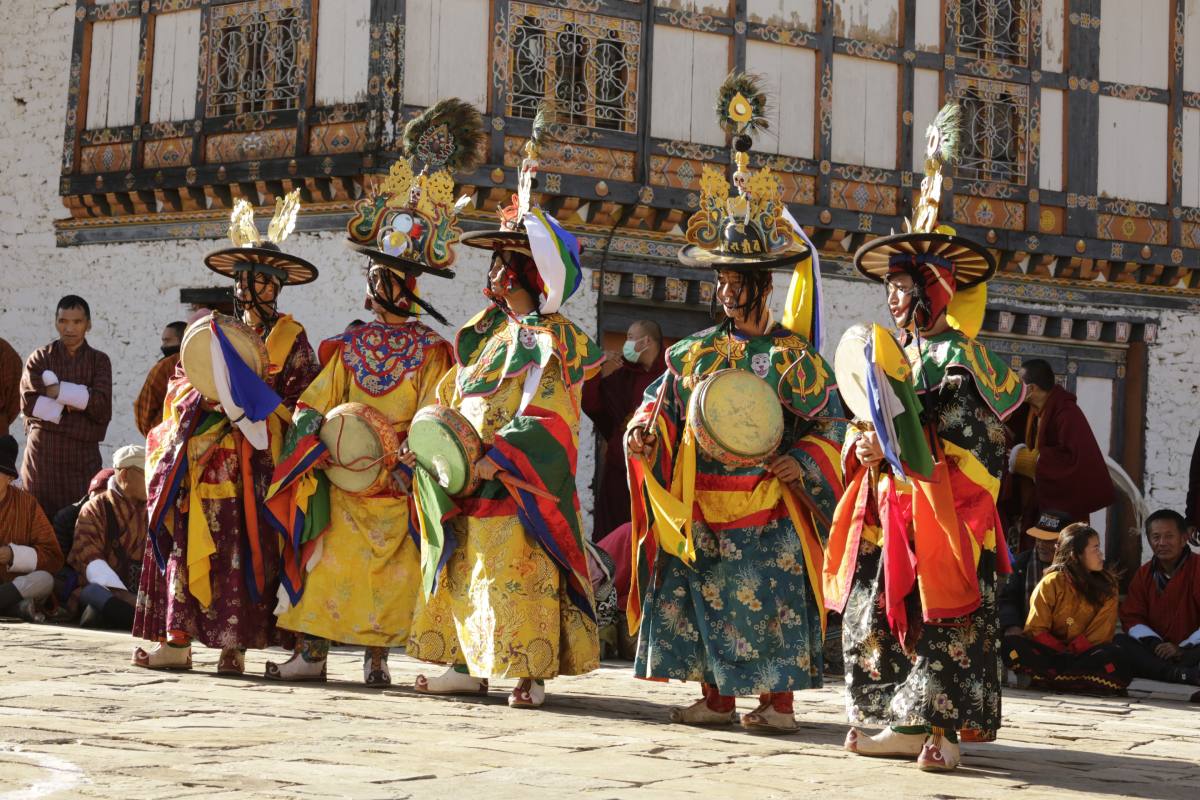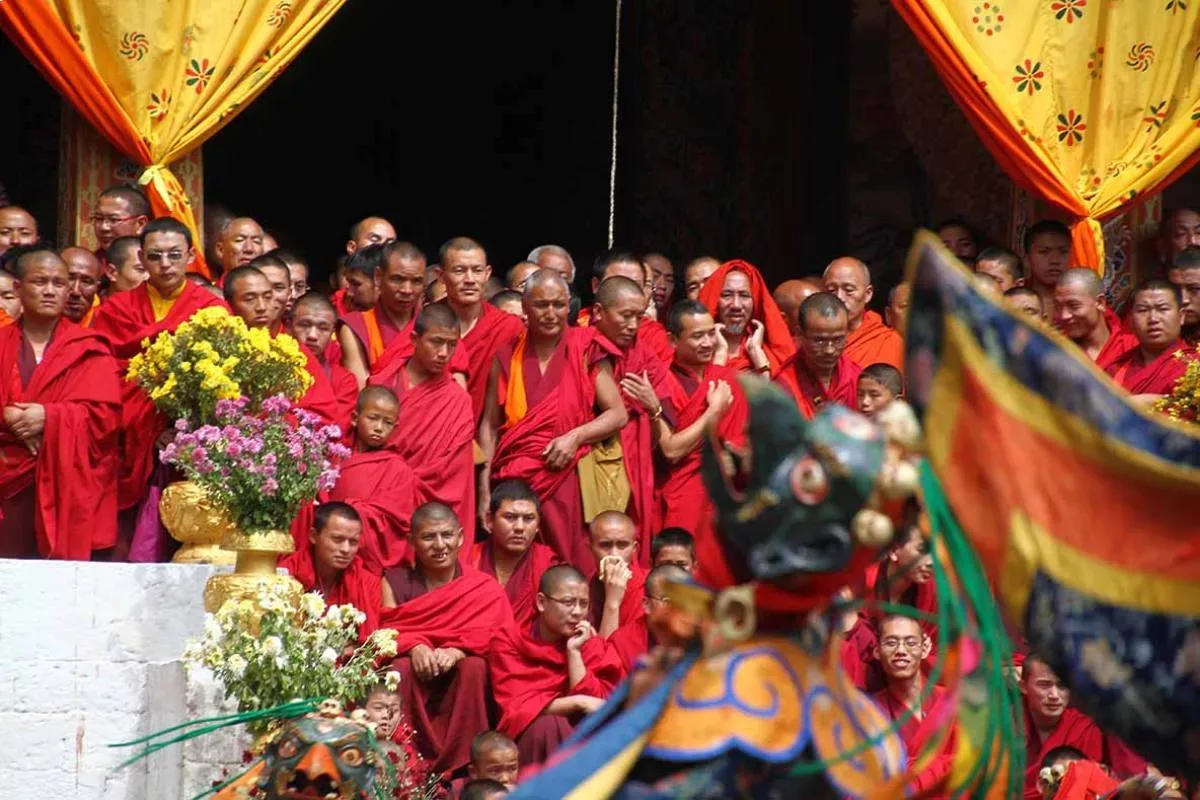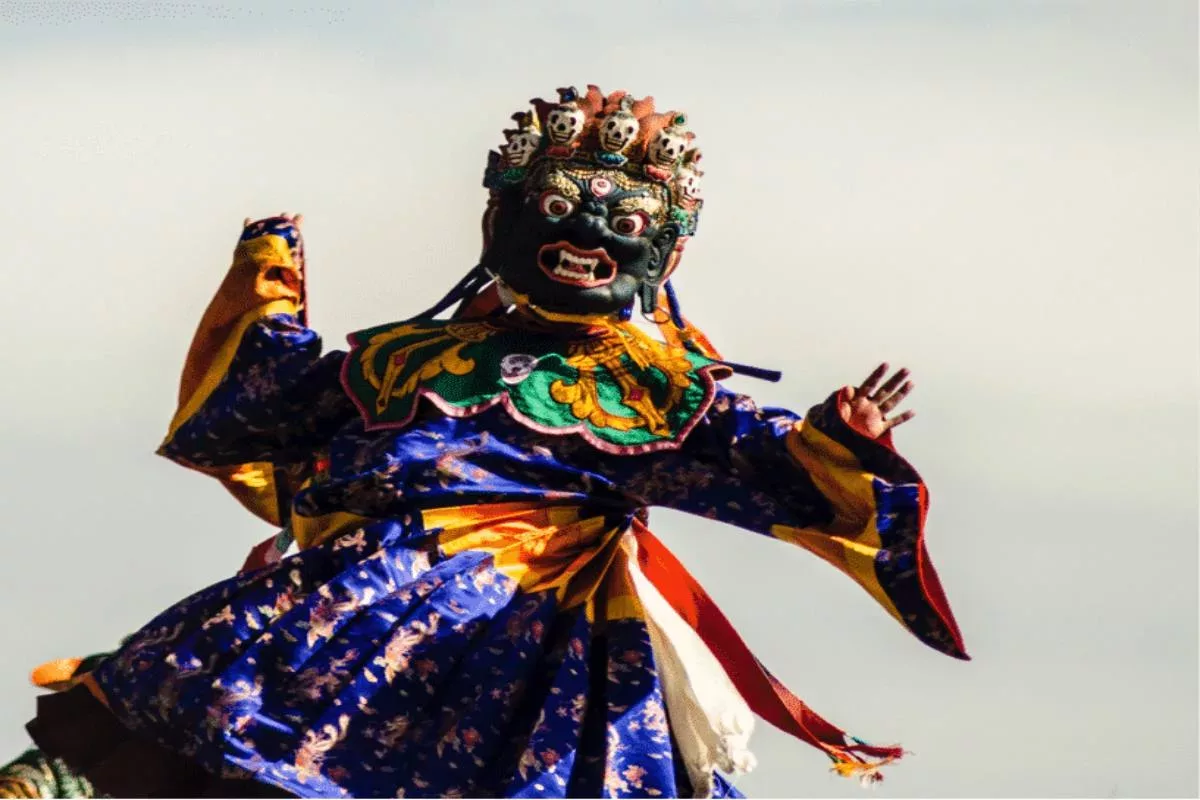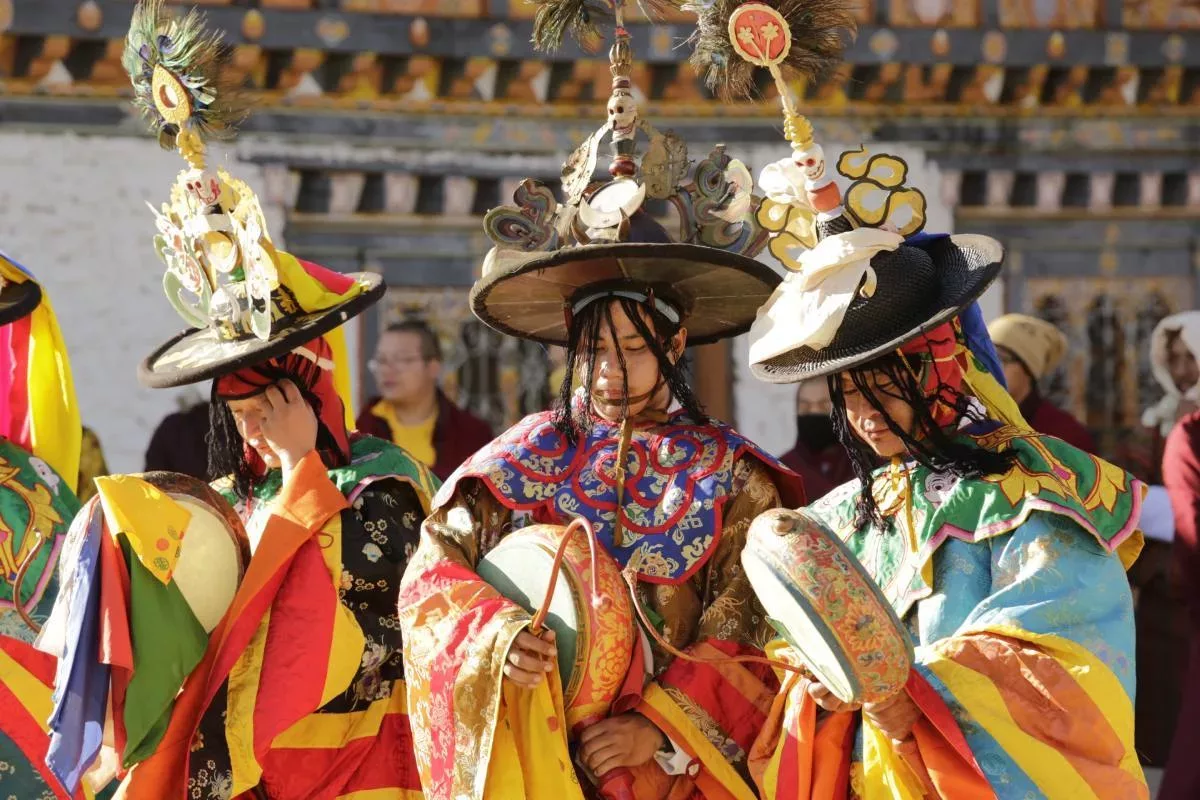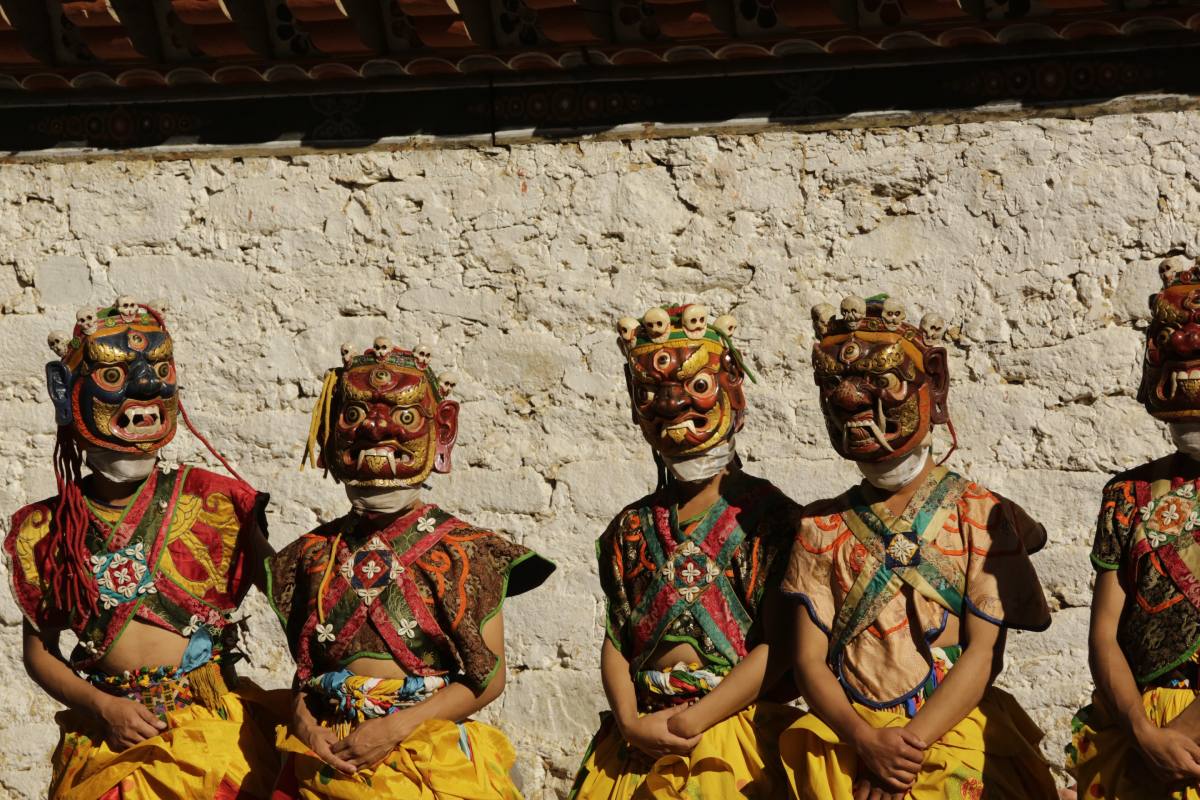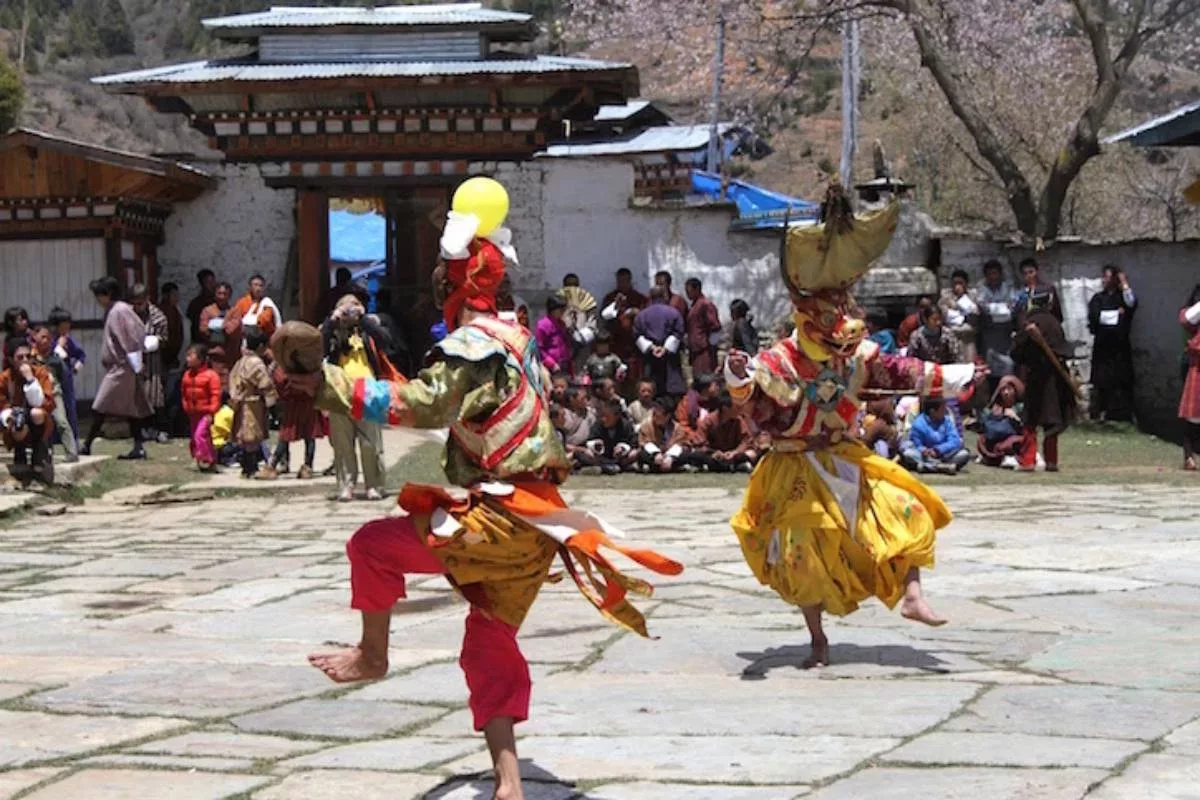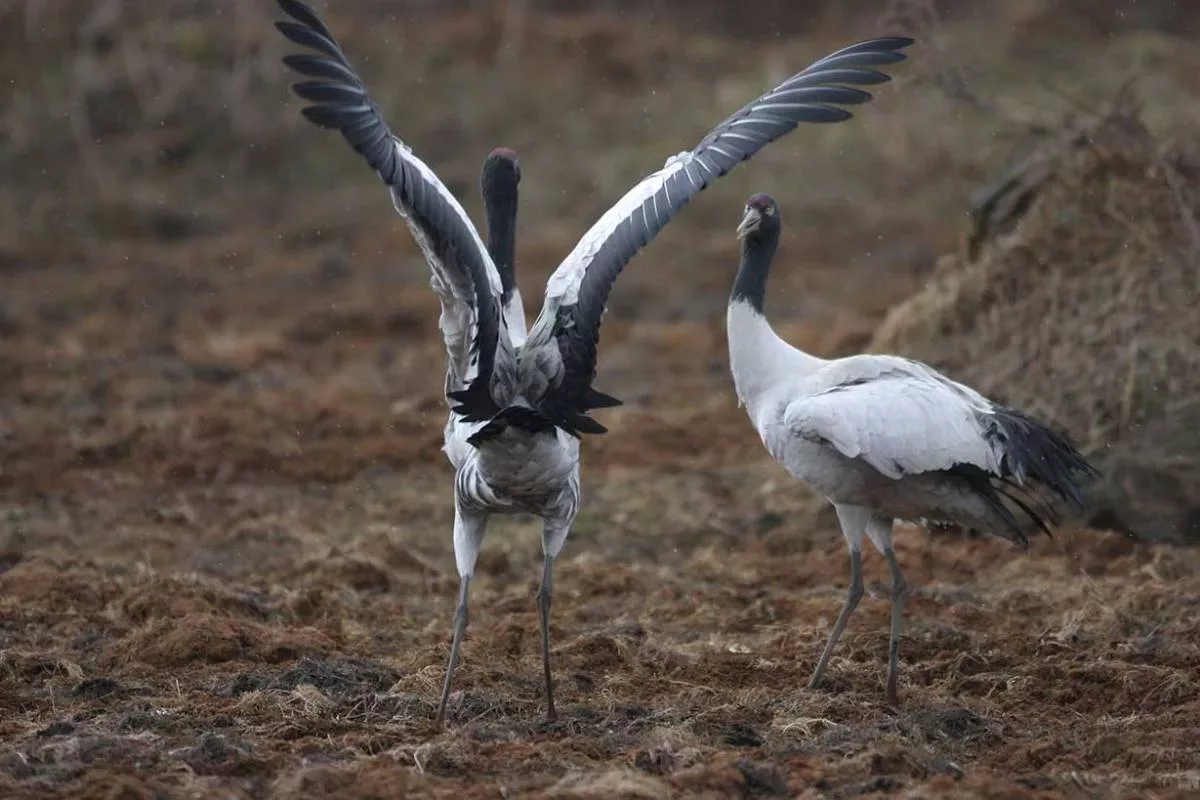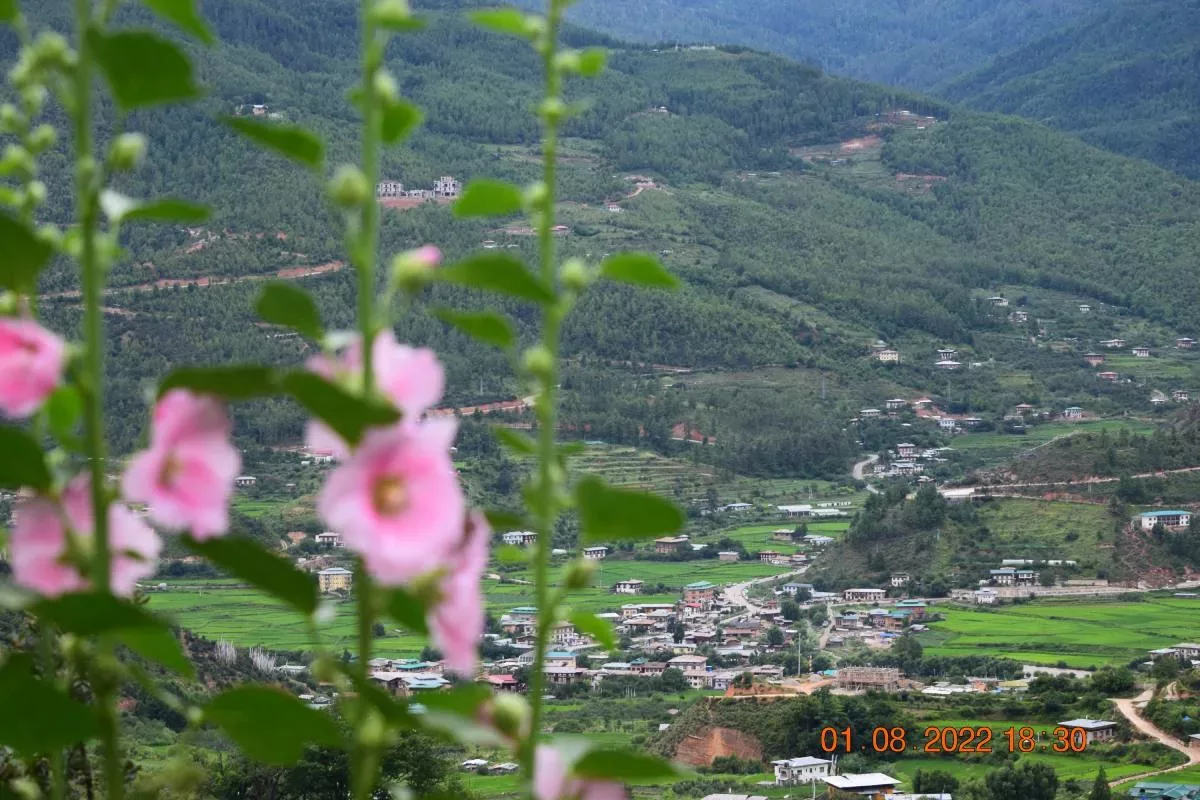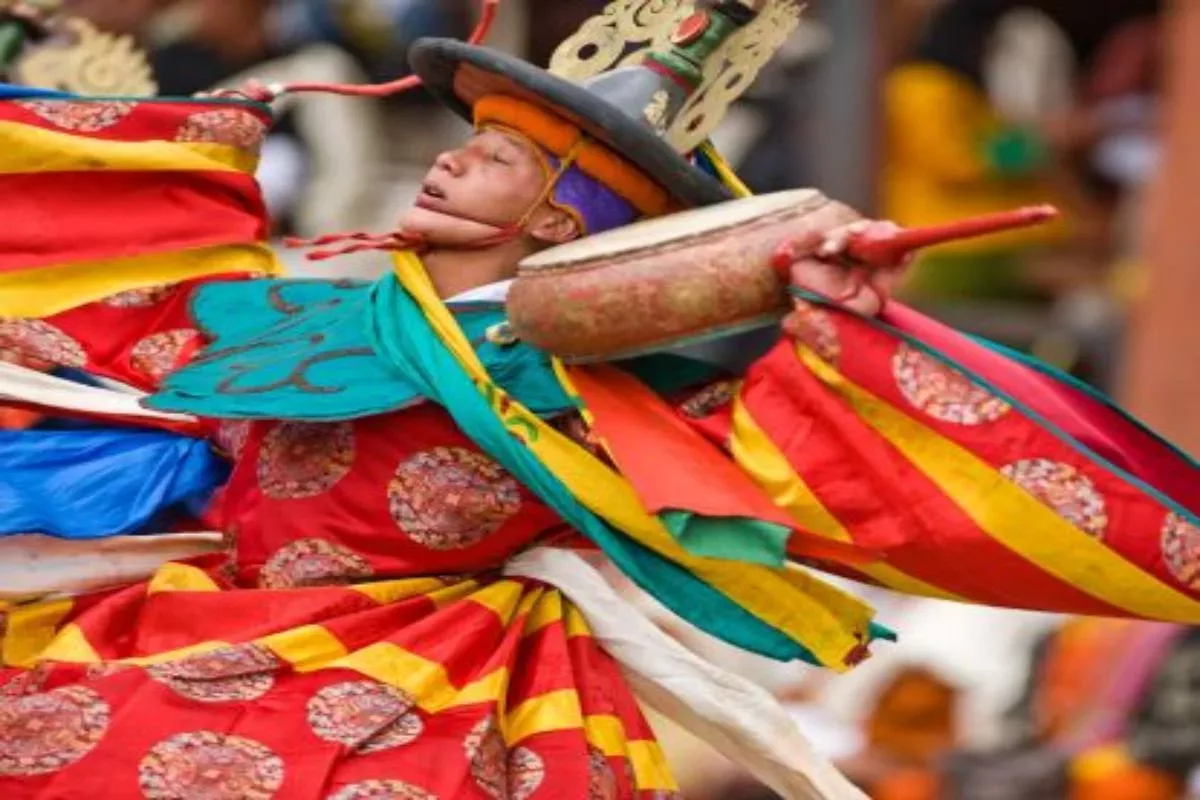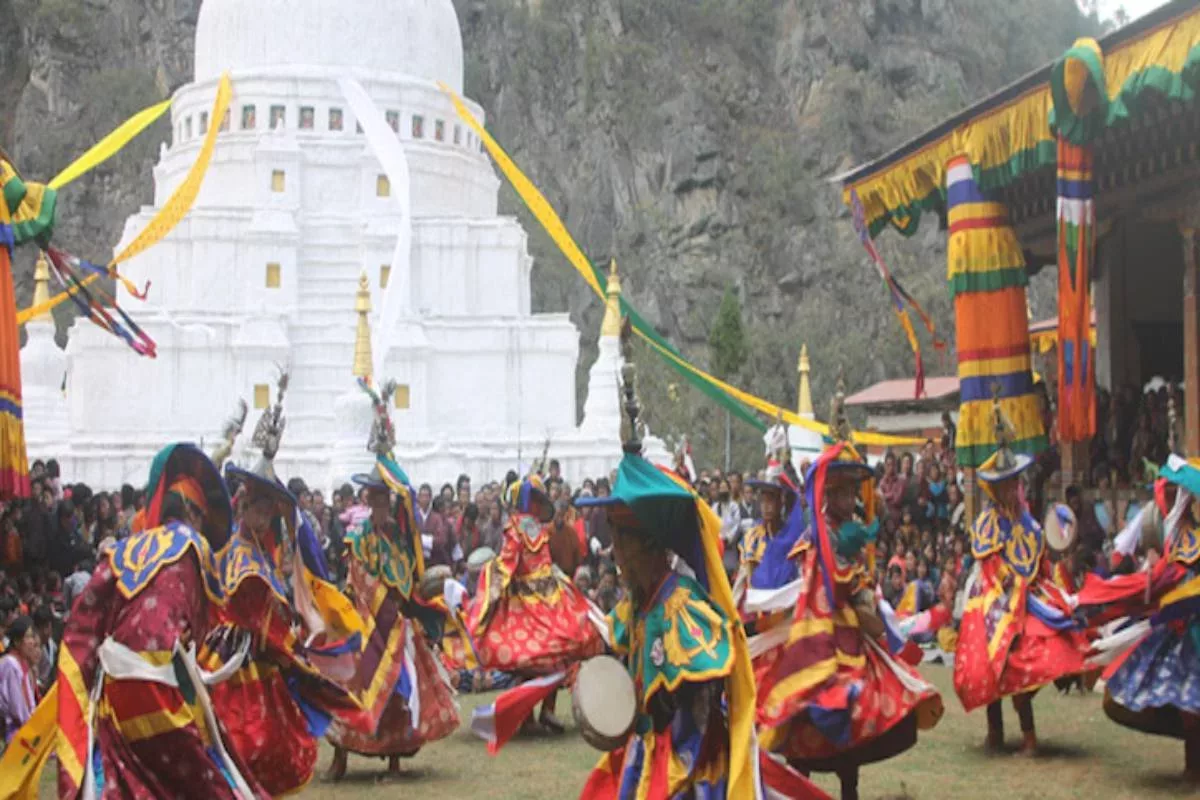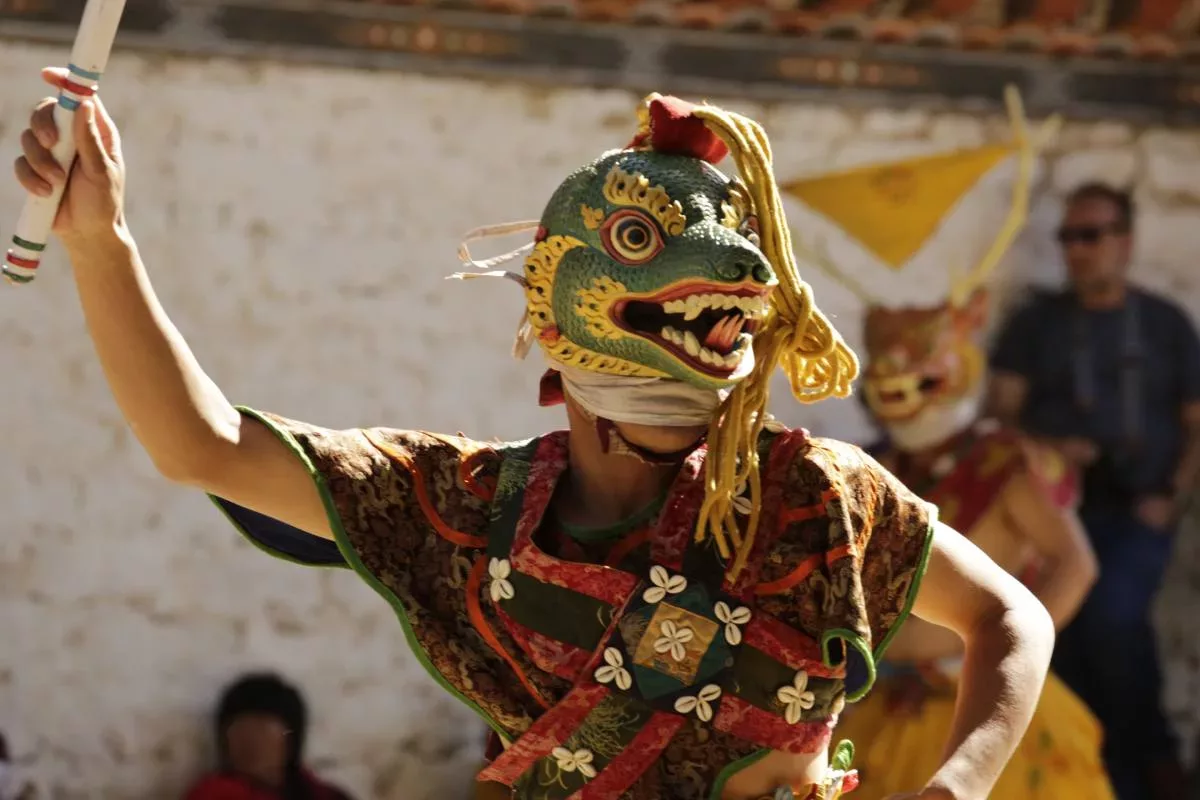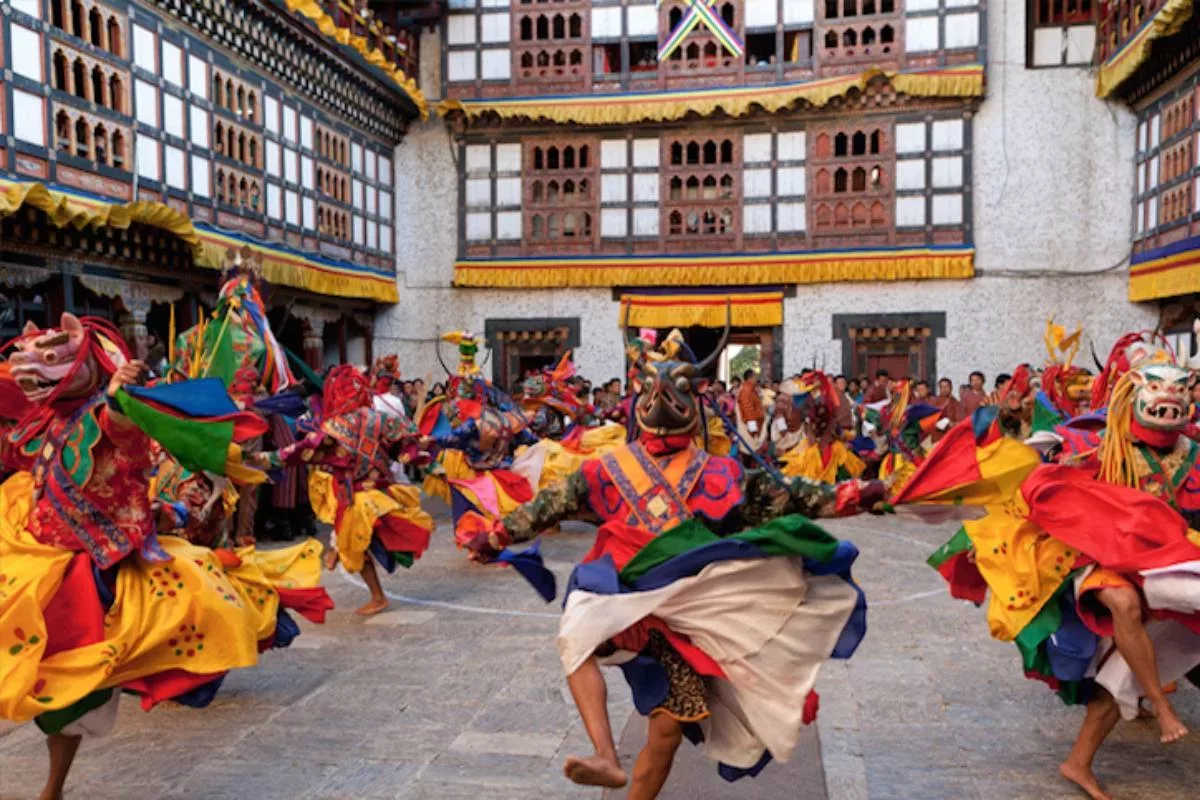Detailed Program
The flight to Paro is one of the most spectacular mountain flights in the world, with a constantly changing panorama of some of the highest mountains on earth. Our representative will meet you at Paro airport exit doors following customs formalities. After lunch enjoys afternoon sightseeing around Paro, including a visit to the Ta Dzong Museum housing many religious relics, works of art, and handicrafts offering a great orientation into Bhutan’s historical, cultural, and religious past.
Next, drive to, 7th Century Kyichu Lhakhang, one of the 108 temples constructed by the Tibetan king Songtsen Gampo. Kyichu is built in a manner similar to the Jokhang in Lhasa. Inside there is a great golden image of Buddha Sakyamuni. Before dinner at the hotel, there will be an orientation on Bhutanese etiquette by your guide.
Overnight at your hotel in Paro.
Places and attractions:
- Rinpung Dzong
- Drukgyel Dzong
- Taktshang
- Kyichu Lhakhang
- Kila Gompa
- Dungtse Lhakhang
- Tachog Lhakhang
- Dzongdrakha
Accommodation options:
After breakfast hike to Taktsang Monastery. The trail is broad and the walk of approximately 1.5 to 2 hours uphill takes you high above the Paro valley. The view of Taktsang Monastery built on a sheer cliff face 900 meters above the valley floor is a spectacular sight. The great Guru Rimpoche is said to have flown here on the back of a tigress when he brought the teachings of the Buddhist Dharma to Bhutan in the 8th Century. Nearby there is a teahouse where you can stop for lunch.
In the afternoon drive to the ruins of the 17th Century Drukgyel Dzong, a historic monument built by the Zhabdrung to commemorate his victory against invading Tibetans in 1644. In fine weather, the towering peak of the sacred Mount Jomolhari (7314m) appears as a stunning backdrop. On the return drive to Paro, visit 7th Century Kyichu Lhakhang, one of the 108 temples constructed by the Tibetan king Songtsen Gampo. Kyichu is built in a manner similar to the Jokhang in Lhasa.
Overnight at your hotel in Paro.
Places and attractions:
- Rinpung Dzong
- Drukgyel Dzong
- Taktshang
- Kyichu Lhakhang
- Kila Gompa
- Dungtse Lhakhang
- Tachog Lhakhang
- Dzongdrakha
Accommodation options:
Wake up very early at 2.30 am and drive to Paro Dzong to witness the Thongdrel ceremony where a large religious painting of Guru Rinpoche made of cloth is unfurled on the side of the Dzong.
This event signifies the final day of the annual festival. After some time spent resting back at the hotel, Drive to the capital, Thimphu (1.5 hours) following the Pachu River. You can stop on the way to take in the magnificent Tachog Lhakhang, the hereditary place of worship for Bhutan’s iron bridge builder.
Overnight at your hotel in Thimphu.
Places and attractions:
- Tashichho Dzong
- Semthoka Dzong
- Dochu La Pass
- Memorial Chorten
- Changangkha Lhakhang
- Zangdopelri
- The Tallest Buddha Image
- Tango And Cheri Monasteries
- The Handicrafts Emporium
- Traditional Medicine
- Zorig Chusum Institute
- National Library
- Weekend Market
- Botanical Garden
- Thadrak Goemba
- Tashigang Goemba
- Chizhing Samtencholing Lhakhang
Accommodation options:
Begin your day with a short drive to Keunselphodrang, a popular vantage point, with the biggest Buddha statues in the world. This site offers a panoramic view of the capital below and also has several walking trails, which range from leisurely to moderate. Then visit the National Memorial Chorten, built in the memory of the Third King and for world peace. Continue to the picturesque 12th-century Changangkha Temple and Nunnery at Zulikha.
Afterward, visit the weekend vegetable market. Located below the main town, near the Wangchhu River, the Thimphu weekend market is by far the largest domestic market for the farmers in Bhutan. Visit the Folk Heritage Museum featuring an exhibition of items and artifacts of Bhutanese villages and rural households. After visiting the museum we will walk to School for Arts & Crafts; which is located close to the museum. This is one of the interesting schools where young boys & girls learn 13 different skills of arts & crafts in Bhutan.
Overnight at your hotel in Thimphu.
Places and attractions:
- Tashichho Dzong
- Semthoka Dzong
- Dochu La Pass
- Memorial Chorten
- Changangkha Lhakhang
- Zangdopelri
- The Tallest Buddha Image
- Tango And Cheri Monasteries
- The Handicrafts Emporium
- Traditional Medicine
- Zorig Chusum Institute
- National Library
- Weekend Market
- Botanical Garden
- Thadrak Goemba
- Tashigang Goemba
- Chizhing Samtencholing Lhakhang
Accommodation options:
Drive from Thimphu to Phobjikha (5-6 hrs) over the Dochu-La pass (3,100m), which is marked by 108 little Chortens and prayer flags. In clear weather, we can enjoy the view of almost all snow-covered mountains including the highest mountain Gangkar Puensum (7740m). We will take a short walk to stretch our legs to Chimi Lhakhang temple.
After lunch at Chimi Lhakhang café, continue our drive crossing over Punatsangchu River at Wangdiphodrang via old town. In Phobjikha we will visit Gangtey monastery before we check into our hotel.
Overnight at your hotel in Gangtey/Phobjikha.
Places and attractions:
- Dargay Goemba
- Gangtey Gompa
- Temple Of Sha Radap
- Gaselo & Nahee Village
- Adha And Rukha Village
- Shaa Region Of Wangdiphodrang
- Bhey Langdrag Nye
Accommodation options:
The three to four-hour Shasi La hike shortens your driving time towards Wangdue by about one hour. The trail is the migration trail for the Gangteps to the lower valleys in the fall. This beautiful hike starts from Gangtey monastery and continues through Tokha village and slowly upwards through Rhododendron forest. It continues across an open meadow and bush bamboo towards the Shasi La Chorten (100 vertical meters/330 feet from the lodge).
From here, the trail continues downwards through stunning old-growth Rhododendron forest to Phama Hotel in Khelikha on the main Wangdue Phodrang road. From here, it takes one hour to drive back to Gangtey. Alternatively, you can follow the Shasi La Trail from the lodge up to the Shasi La Chorten and turn around and walk the same way back to Phobjikha Valley.
Time: Gangtey – Phama Hotel, Khelikha: 3 – 4 hours.
Please note that the descent from the Shasi La Chorten to Khelikha is very steep and can be hard on the knees.
Overnight at a hotel in Punakha/Wangduephodrang.
Places and attractions:
- Dargay Goemba
- Gangtey Gompa
- Temple Of Sha Radap
- Gaselo & Nahee Village
- Adha And Rukha Village
- Shaa Region Of Wangdiphodrang
- Bhey Langdrag Nye
Accommodation options:
Chorten Nebu Temple Trek: 6 miles, moderate with an elevation gain of 1,200 ft
The walk this morning begins on a quiet country road, before climbing steeply over a rough trail as you make your way through terraced fields of rice to the local Chorten Nebu Temple. After lunch, you continue descending through small villages. Although steep in places, the trail from Chorten Nebu towards the valley floor is wide and well defined, as local people visiting the temple, as well as children walking to and from school frequently use it.
Time permitting, we can visit Punakha Dzong, the “Palace of Great Happiness” built in 1637 by the Zhabdrung, the ‘Unifier of Bhutan’ as predicted by the great Guru Rimpoche (Padmasambhava). It is situated at the confluence of the Mo Chu and Pho Chu (Mother and Father Rivers) and is the winter headquarters of the Je Khenpo and hundreds of monks who move en masse from Thimphu to this warmer location.
The three-story main temple of the Punakha Dzong is a breathtaking example of traditional architecture with four intricately embossed entrance pillars crafted from cypress and decorated in gold and silver. It was here on 17th December 1907, that Bhutan’s first king was crowned.
Overnight at a hotel in Punakha/ Wangduephodrang.
Places and attractions:
- Dargay Goemba
- Gangtey Gompa
- Temple Of Sha Radap
- Gaselo & Nahee Village
- Adha And Rukha Village
- Shaa Region Of Wangdiphodrang
- Bhey Langdrag Nye
Accommodation options:
After leaving Punakha, en route to Paro you enjoy a walk through a forest with temperate vegetation. Arriving at the royal botanical garden, which is 8,800 feet above sea level, you will enjoy the Rhododendron festival performed by local people in and around Hongtsho and Thinleygang village. A short walk around the small lake, where you may spot a red panda, one of the rare animals in the Himalayas.
After enjoying a visit through the gardens we continue our drive to Paro. After settling into comfortable accommodations, there is time to relax before a dinner of local specialties in the hotel restaurant.
Overnight at a hotel in Paro.
Places and attractions:
- Rinpung Dzong
- Drukgyel Dzong
- Taktshang
- Kyichu Lhakhang
- Kila Gompa
- Dungtse Lhakhang
- Tachog Lhakhang
- Dzongdrakha
Accommodation options:
Breakfast in the hotel then drives to the airport for the flight to your onward destination.
Places and attractions:
- Rinpung Dzong
- Drukgyel Dzong
- Taktshang
- Kyichu Lhakhang
- Kila Gompa
- Dungtse Lhakhang
- Tachog Lhakhang
- Dzongdrakha
Accommodation options:
Frequently Asked Question
For economy class, your check-in luggage cannot exceed 20 kg, and for first class, it can be up to 30 kg. You can carry a few extra kilograms in your luggage, but you must pay for it.
No, there is no official limit on the number of visitors to Bhutan. However, the premium that visitors must pay as a daily tariff, as well as the requirement to use a tour operator, maintain exclusivity and limit arrivals.
This high-value, low-volume tourism policy seeks to discourage mass tourism and backpackers.
Our trips range in elevation from 7000 to 12,000 feet. Because most people are not used to the altitude, it is an important consideration for anyone planning to visit Bhutan.
The average elevation is approximately 7000 feet. Most of our itineraries include traveling up to 12,000 feet in elevation, with a maximum sleeping elevation of 10,000 feet. We take precautions to reduce the risk of altitude sickness, and we are happy to discuss this with our guests.
Bhutan is a tiny landlocked country located between India and China in the eastern Himalayas. Its terrain varies from subtropical plains and forests in the south to subalpine forests and snow-capped mountains in the north.
Bhutan is a Buddhist country that is widely regarded as the last stronghold of Mahayana Buddhism.
Visit any time of the year – you will not be disappointed. You will be blessed to experience Bhutan differently. For example, if you visit Bhutan in the spring this year, you can still visit in the winter the following year because winter has its specialties.
If you plan to visit during the regular season, there will be fewer visitors and you will have a more rewarding experience. We recommend June to July (summer) and December to March (winter/spring). Trekking requires you to travel during peak season months to find suitable conditions.
- Inclusion
- Exclusion
- Insurance
- Airport pick-up and drop-off by private vehicle.
- 3-star accommodation (4 & 5 stars may require an additional premium update).
- Bhutan visa fee – including all necessary processing
- Route Permit
- Three meals per day during your stay in Bhutan
- A licensed Bhutanese tour guide
- All land transportation by private vehicle
- Camping equipment and haulage for trekking tours
- Sightseeing as per itinerary
- Monuments entrance fees where applicable
- Drinking water
- All internal taxes and charges
- A sustainable development fee of $200. (This sustainable development fee goes towards free education, free healthcare, and poverty alleviation, along with the building of infrastructure.)
- Airfare & Travel Insurance
- Expenses of personal nature, Tips to guides and drivers
- Expenses occurred due to unavoidable events i.e. road wrecks, flight delays etc.
Package does not include insurance of any kinds, and that you are required to obtain separate coverage from your home country before your trip begins.

